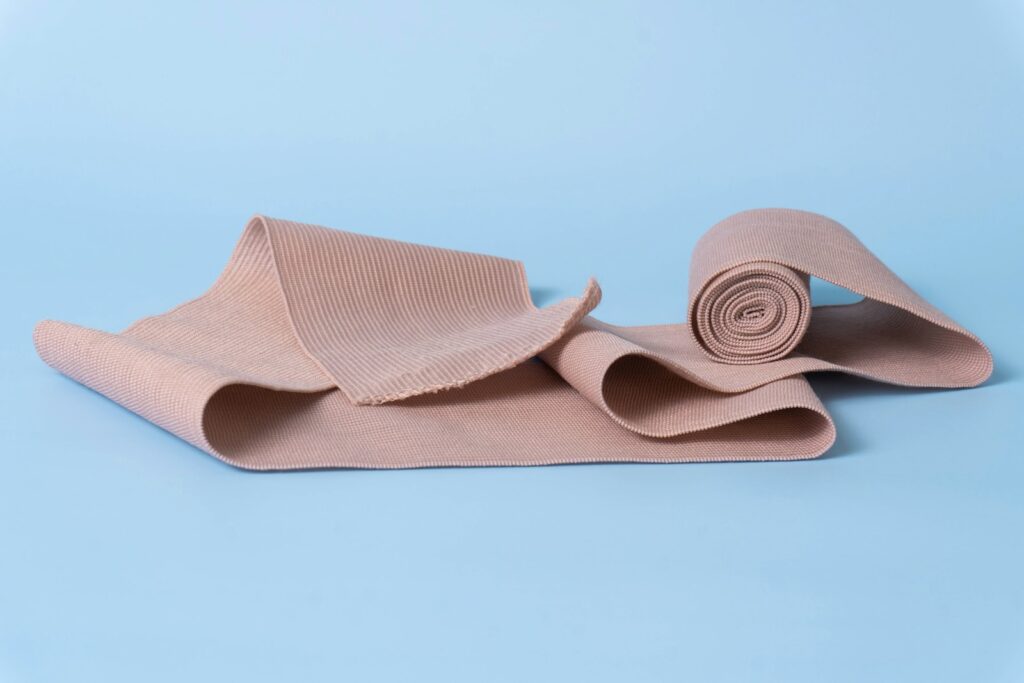Bandage wraps are an essential tool in every first-aid kit. They are versatile, lightweight, and easy to use. This article will explore what bandage wraps are and when to use them in different situations.
Understanding Bandage Wraps
Bandage wraps, also known as elastic wrap bandages or compression wraps, are long strips of elastic material that are used to apply pressure and provide support for injuries. They come in various widths and lengths to accommodate different body parts and specific needs.
When to Use Bandage Wraps
Sprained Ankles
Bandage wraps are commonly used for sprained ankles. They offer stability by compressing the affected area, reducing swelling, and preventing further injury.
Wrist Support
Bandage wraps can be used for wrist support, especially when there is a mild strain or discomfort from overuse. A properly applied bandage wrap can help alleviate pain and stabilize the wrist joint.
Joint Injuries
Bandage wraps can also be used for other joint injuries, such as sprained wrists, knees, or elbows. By applying the wrap snugly around the affected area, it provides added support during the healing process.
Muscle Strains
For muscle strains or pulls, bandage wraps can help reduce swelling and provide support. These injuries commonly occur in sports activities or physical work.
Post-Surgery
After certain surgical procedures, like knee or shoulder surgeries, doctors often recommend using bandage wraps to secure dressings and reduce swelling at the site of the incision.
Varicose Veins
Individuals with varicose veins may benefit from using compression bandages or wraps, as they help improve blood flow by exerting pressure on leg muscles and veins.
Sports Activities
Many athletes use bandage wraps proactively before engaging in high-impact sports activities to prevent potential injuries or excessive strain on certain body parts. The wrap provides stability and support for vulnerable areas.
It is important to note that while bandage wraps can provide temporary relief and support, they are not a substitute for medical advice or evaluation by a healthcare professional. It is essential to seek proper medical attention for severe injuries or if there is uncertainty about the severity of an injury.
Applying Bandage Wraps
Now that you understand when to use bandage wraps, it is crucial to know how to apply them correctly. Here are some general steps:
Clean and dry the area
Before applying the bandage wrap, ensure that the affected area is clean and dry to prevent infections or irritations.
Wrap in a figure-eight pattern
Start at the extremity of the injury site and wrap the bandage around it in a figure-eight pattern, overlapping each layer by one-third of its width until your desired level of compression is achieved.
Apply proper tension
As you wrap, apply enough tension to provide support, but be cautious not to make it too tight, which may impede blood circulation.
Secure the end
Once you have wrapped the injured area adequately, secure the end by using tape or fasteners provided with the bandage wrap. Ensure it is fixed snugly but not too tight that it cuts off circulation.
Remember To Seek Professional Medical Advice
While self-treatment with bandage wraps can offer short-term relief in mild cases, it’s always important to prioritize your health and consult a medical professional for a proper diagnosis and comprehensive treatment recommendations if an injury does not improve or seems concerning.
Metro Vein Centers Nationally Accredited Clinics(Opens in a new browser tab)
End Note
Bandage wraps are effective tools for providing stability, support, and compression for various injuries, such as sprains, strains, joint injuries, post-surgery care, varicose vein management, and proactive sports activities. However, do keep in mind their limitations and always seek professional guidance for proper evaluation and treatment. Being knowledgeable about bandage wraps and their applications will prove invaluable when faced with minor injuries or in situations where immediate medical attention may not be available. So, make sure to keep a few bandage wraps in your first aid kit, as they are essential additions for any emergency situation.
